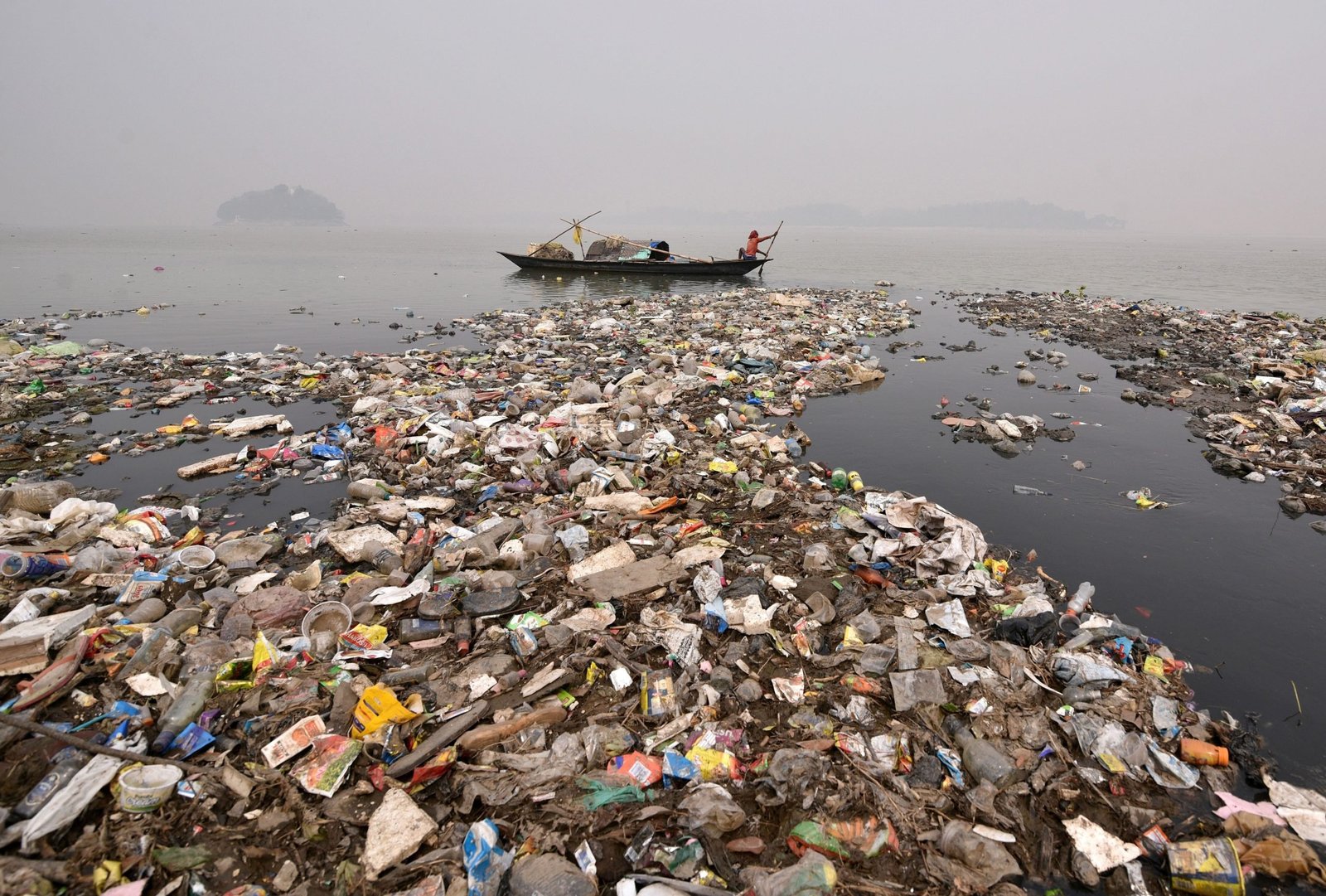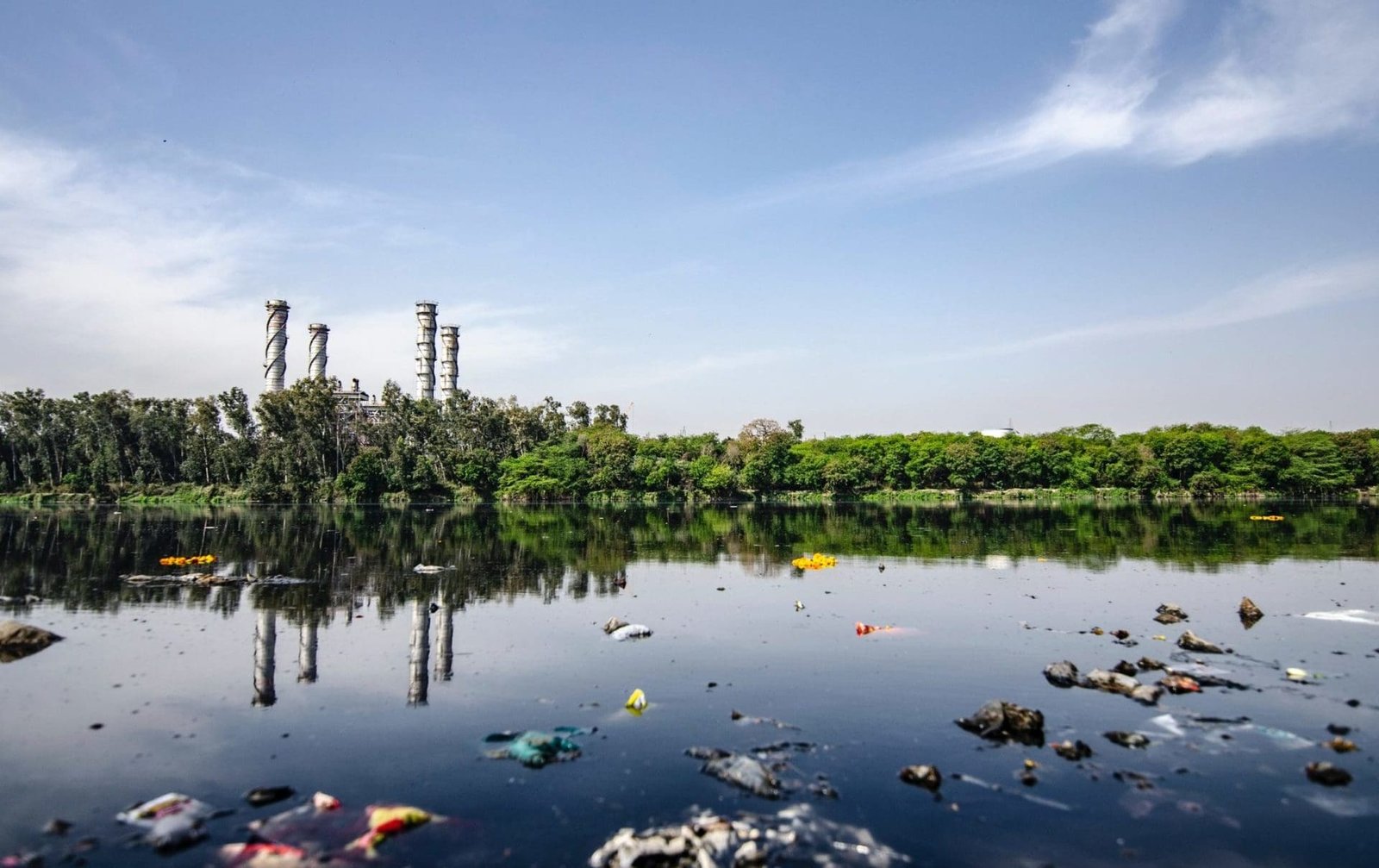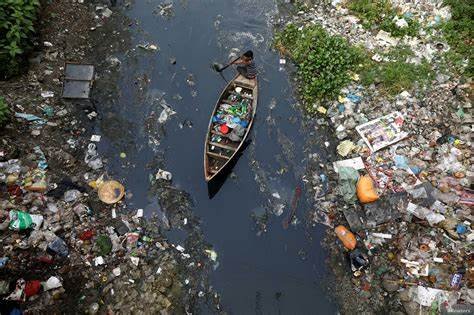Water pollution refers to the contamination of water bodies such as rivers. Lakes, oceans, groundwater, and even drinking water sources by harmful substances or pollutants. These pollutants can be introduced into water bodies through various human activities, industrial processes, agricultural practices, or natural occurrences.
Common sources of water pollution include:
- Industrial discharge: Factories and industrial facilities release various chemicals. Heavy metals, and other pollutants directly into water bodies through pipes or runoff.
- Agricultural runoff: Pesticides, fertilizers, and animal waste from agricultural activities can wash into rivers and streams, causing contamination.
- Urban runoff: Stormwater runoff from urban areas can carry pollutants such as oil, chemicals, and debris into water bodies.
- Wastewater discharge: Untreated or inadequately treated sewage and wastewater from households. Businesses and sewage treatment plants can introduce pathogens, nutrients, and other pollutants into waterways.
- Oil spills: Accidental or intentional releases of oil and petroleum products into oceans. Rivers or lakes can have devastating effects on aquatic ecosystems and wildlife.
- Atmospheric deposition: Airborne pollutants such as mercury and sulfur dioxide can be deposited into water bodies through precipitation. Leading to contamination.
- Water pollution can have serious environmental, economic, and public health consequences. It can harm aquatic life, and disrupt ecosystems. Degrade water quality, and make water unsafe for drinking, swimming, fishing, and other recreational activities. Addressing water pollution requires comprehensive efforts, including pollution prevention. Regulations, enforcement, and the implementation of sustainable practices to protect and preserve water resources.
Safe Water and Your Health
Safe water is essential for maintaining good health and well-being. Access to clean drinking water is a fundamental human right and a critical factor in preventing it. Waterborne diseases and promoting overall health. Here are some key points about safe water and its impact on health:
- Prevention of Waterborne Diseases: Contaminated water can harbor harmful pathogens such as bacteria, viruses, and parasites. Which can cause diseases like cholera, typhoid fever, dysentery, and hepatitis A. Access to safe drinking water helps prevent the spread of these waterborne illnesses.
- Nutrition and Hydration: Safe water is essential for proper nutrition and hydration. Drinking an adequate amount of clean water is crucial for maintaining bodily functions. Regulating body temperature, transporting nutrients, and flushing out toxins.
- Reducing Health Risks: Contaminants in water, such as heavy metals, pesticides, and chemicals. Can pose serious health risks when consumed over time. Long-term exposure to these contaminants may lead to various health problems, including neurological disorders. Developmental issues, and certain types of cancer.
- Protecting Vulnerable Populations: Children, the elderly. Pregnant women and individuals with weakened immune systems are particularly vulnerable to the health impacts of contaminated water. Providing safe water is essential for protecting the health of these vulnerable populations.
- Improving Sanitation: Access to safe water is closely linked to sanitation and hygiene practices. Proper sanitation, including the availability of clean water for handwashing and personal hygiene, plays a crucial role in preventing the spread of waterborne diseases and promoting overall health.
- Community Development: Access to safe water is not only important for individual health but also for community development and well-being. Communities with reliable access to clean water can thrive economically, socially, and environmentally.
Waterborne Disease From All Water Sources
Waterborne diseases can originate from various water sources, including both natural bodies of water and human-made water systems. Here are some examples of waterborne diseases and the water sources from which they can spread:
- Cholera: Cholera is caused by the bacterium Vibrio cholerae and is often associated with contaminated drinking water and inadequate sanitation. It can spread through water sources contaminated with fecal matter, such as rivers, lakes, and untreated drinking water supplies.
- Typhoid Fever: Typhoid fever is caused by the bacterium Salmonella Typhi and can be transmitted through ingestion of water or food contaminated with human feces. Contaminated drinking water sources, such as wells or water storage tanks, can serve as a vector for the spread of typhoid fever.
- Giardiasis: Giardiasis is a diarrheal illness caused by the parasite Giardia intestinalis (also known as Giardia lamblia). It can be transmitted through the ingestion of water contaminated with Giardia cysts, which can be found in untreated or inadequately treated water sources, including streams, rivers, and wells.
- Hepatitis A: Hepatitis A is a viral infection that can cause inflammation of the liver. It can be transmitted through the ingestion of water or food contaminated with the hepatitis A virus, particularly in areas with inadequate sanitation and hygiene practices.
These are just a few examples of waterborne diseases that can be transmitted through various water sources. Preventing waterborne diseases requires ensuring access to safe drinking water, implementing effective water treatment and sanitation measures, promoting good hygiene practices, and educating communities about the risks associated with contaminated water sources.
internal link: ragdi







